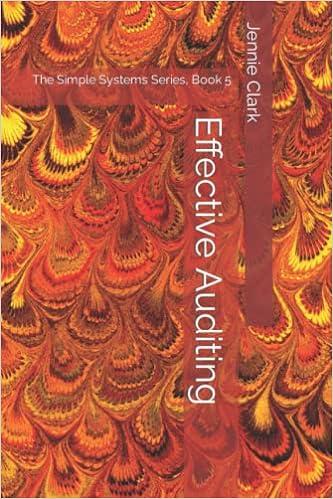Answered step by step
Verified Expert Solution
Question
1 Approved Answer
E6-21 (Algo) Recording, Reporting, and Evaluating a Bad Debt Estimate Using the Percentage of Credit Sales Method LO6-2. During the current year, Robbys Camera Shop
E6-21 (Algo) Recording, Reporting, and Evaluating a Bad Debt Estimate Using the Percentage of Credit Sales Method LO6-2.
During the current year, Robbys Camera Shop had sales revenue of $159,000, of which $58,000 was on credit. At the start of the current year, Accounts Receivable showed a $23,000 debit balance and the Allowance for Doubtful Accounts showed a $900 credit balance. Collections of accounts receivable during the current year amounted to $56,000.
Data during the current year follow:
- On December 31, an Account Receivable (J. Doe) of $1,800 from a prior year was determined to be uncollectible; therefore, it was written off immediately as a bad debt.
- On December 31, on the basis of experience, a decision was made to continue the accounting policy of basing estimated bad debt losses on 3.0 percent of credit sales for the year.
Required:
- Prepare the required journal entries for the two items on December 31, the end of the accounting period.
- Show how the amounts related to Accounts receivable and Bad debt expense would be reported on the income statement and balance sheet for the current year. Disregard income tax considerations.

Step by Step Solution
There are 3 Steps involved in it
Step: 1

Get Instant Access to Expert-Tailored Solutions
See step-by-step solutions with expert insights and AI powered tools for academic success
Step: 2

Step: 3

Ace Your Homework with AI
Get the answers you need in no time with our AI-driven, step-by-step assistance
Get Started


